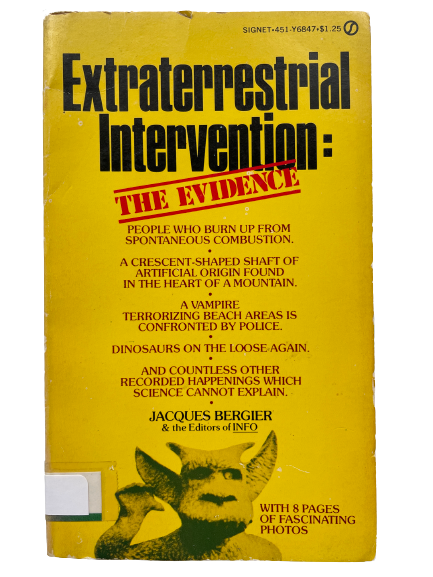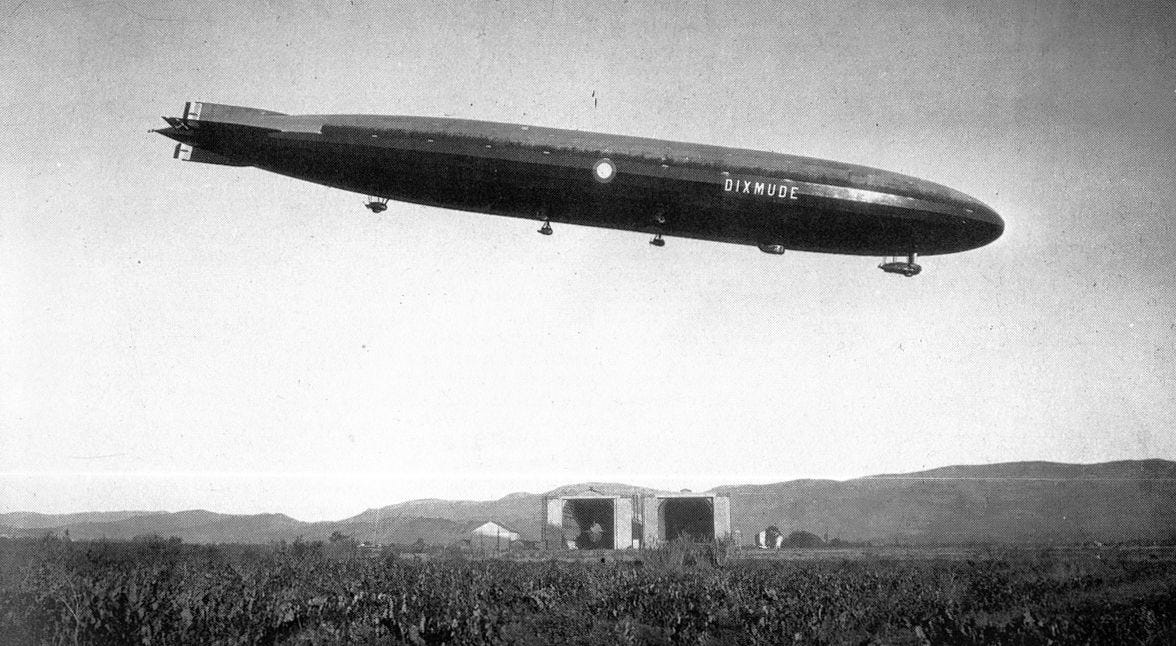Books Your Parents Warned You About: 'Extraterrestrial Intervention: The Evidence'
We take a look at the state of affairs during the Smokin' Seventies
Extraterrestrial Intervention: The Evidence (1975) edited by Jacques Bergier, 143 pgs.
The 1970s were significant for the development of UFO lore. The ‘Pascagoula Abduction’ took place in 1973. In 1974 John Lennon witnessed strange lights flying over his Manhattan residence. The following year, Travis Walton went missing for a standard work-week after his infamous forest encounter with a UFO. “Contactee” Billy Meier released his first UFO photos in 1976. Charles Berlitz’s The Bermuda Triangle (1974) popularized ideas about supernatural phenomena manifesting across our planet while Betty and Barney Hill’s abduction story was broadcast to a mass audience in a made-for-TV movie (The UFO Incident, 1975).
Amidst this resurgent interest in unexplained mysteries, the International Fortean Organization (INFO) took the hint and repackaged some of their old magazine articles into a book: Extraterrestrial Intervention: The Evidence (1975).
The publishers chose to lead with an ET theme, but the title is deceptive. Most pages don’t have anything to do with aliens. The book is divided into four sections representing different areas of inquiry: vanished civilizations, extraterrestrial beings, unknown animals, and general Fortean phenomena. Taken together, the chapters are meant to prove that “forces do exist outside the sphere of ordinary perception.” It leaves a lot to be desired.
One of the best segments is Lyle Gaulding’s Mysteries of the Airship Age—a well-researched timeline of historical attempts to harness lighter-than-air balloon technology. He highlights reports of huge dirigibles that inexplicably go missing in action, leaving no trace of their whereabouts. He cites the 1923 case of the Dixmude, a 700-foot French craft that disappeared with her 50 passengers during a flight over North Africa. When a small piece of wreckage and a single body washed ashore days later, the author found the lack of debris suspicious. His assessment sounds similar to modern-day sentiment about the disappearance of airplanes like MH370: “This is puzzling to say the least.” There’s something enduringly creepy about such a colossal machine vanishing into thin air.
Trailblazing Fortean researchers like Vincent Gaddis, Ivan Sanderson, and John Keel were regular contributors to INFO’s subscription Journal, but they’re notably absent from this collection.
Sanderson and Gaddis hand in one article apiece, while Keel’s work is omitted completely. We’re left with the B-Team, who do an admirable job of delivering the goods. Still, including essays from the genre’s heavyweights would have drastically improved the quality of the book.
Extraterrestrial Intervention doesn’t break any new ground, but it offers a glimpse into the paranormal topics that were trending in the 1970s. Unsurprisingly, they’re some of the same “mysteries” we see rehashed and reanimated in today’s books, magazines, and shows.
Another sign that the book was a product of the 1970s? There was a colorful cigarette advertisement placed smack dab in the middle.
Printed on sturdy cardstock, one side had an image of a guy wearing plaid pants and white tube socks smoking True brand cigarettes on a bench inside a locker room. Somehow he looked exactly like the kind of guy who’d be straddling an ashtray while chain smoking cigarettes inside a locker room. The other side was a Kent cigarette ad that featured a spokes-model with impossibly white teeth smiling with a cig in her hand.
In the 1970s, the Surgeon General’s warnings were more like strongly-worded suggestions.














The 70s are still so underrated for UFO and paranormal stuff!